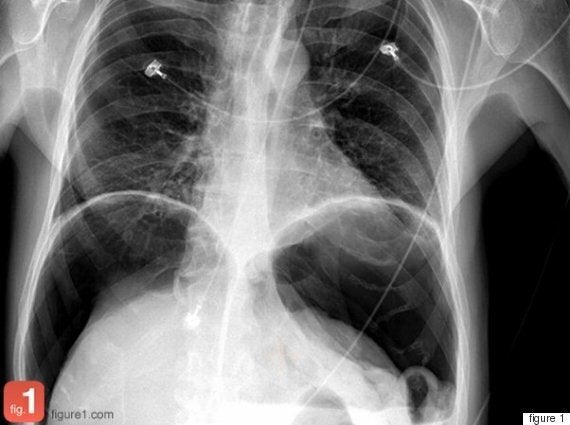If you've ever waited to see a specialist in the emergency room, you'll be happy to know that a new app, the so-called "Instagram for doctors" could put a specialist at your doctor's fingertips in minutes rather than hours.
The app, called Figure 1, allows doctors around the world to upload anonymous photos of their most compelling (and confusing) cases to a photo sharing platform with goals of trading information and asking for advice.
"Images and learning medicine go hand in hand," said Dr. Josh Landy, the app's creator and a doctor in an intensive care unit in Toronto. "Images have been used in medicine to teach and learn for thousands of years."

In 2012, while Landy was a visiting scholar at Stanford, he noticed that younger attendants, residents and students were using images to describe and discuss cases they were seeing on a daily basis. "My patients are sick and have complex needs," Landy said. "Often we’ll use images and pictures to communicate what’s going on with those patients. I absolutely recognize the behavior in my own life."
Naturally, the primary concern when developing an app that shares medical information was privacy. Landy and his team worked with a lawyer to create safeguards that protect patients' identities, first and foremost by verifying users' credentials. While anyone can download the app, only health care professionals can post images or comment. Other safeguards include vetting photos before they go up and providing all the tools for users to remove identifying details such as faces and tattoos from the images. And before anything can be posted, patients must sign an in-app permission form.
"Whenever I’ve asked patients if I can share their photo with other health care providers for educational purposes, people tend to be very receptive," Landy said.
SEE ALSO:Hospital Patients 'Waking Up During Surgery', Health Experts WarnIncredible Photo Of Transplant Recipient Posing With Heart In Her Hands Goes Viral
And a new feature, called Paging, could benefits patients directly. Using the Paging feature, Figure 1 locates a specialist from the network -- using push notifications -- to give input on the case. The average time for cases solved is 30 minutes, according to Landy.
Landy's goals for Figure 1 are lofty. "The big goal is to help democratize medical knowledge," he said. "I want that knowledge to be everywhere in the world where there is Internet signal, because the knowledge of specialists shouldn’t be beyond the reach of the world’s medical community."
Here are some striking and informative (read: graphic!) images from Figure 1, below: